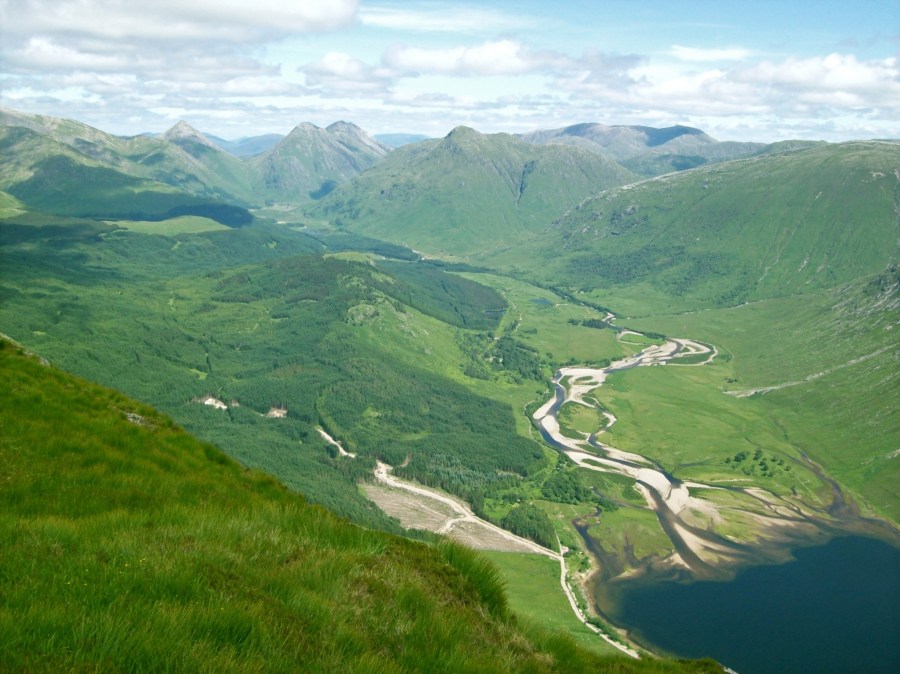Mountaineers have challenged the Highland Council on its stewardship of one of Scotland’s most scenic and iconic glens.
Glen Etive is a National Scenic Area, and a Wild Land Area, famously featuring in a James Bond movie and loved by thousands of Scots and visitors to the country.
But it currently faces the prospect of no less than seven hydro power construction schemes, each of which involves new road construction, bridge-building, trench digging, cement-pouring and power cabling, for a relatively low power output.
Stuart Younie, Chief Executive Officer of Mountaineering Scotland, said: “We are challenging the Highland Council on its stewardship of Glen Etive and call for the planning department to defend this much-loved landscape.”
Mr Younie stressed that it was essential to look at the whole picture of development in the glen rather than treating each application in isolation.
Davie Black, Access and Conservation Officer for Mountaineering Scotland, said that the big picture in Glen Etive would include a new three-wire overhead grid connection offered by SSE to the developer.
He said: “This is ironic as SSE has recently been claiming green credentials by proposing to underground powerlines in the Nethy Bridge/Boat of Garten area. If it can be done there, then the criteria apply equally here in a National Scenic Area with its qualities of wild land.”
Stuart Younie added: “Wild land is fragile and requires understanding of what can damage its qualities for generations to come, and it needs a commitment to protect those qualities. The Highland Council is now holding this future in its hands and we urge the Council to take the steps needed to look after it.”
“If either the Highland Council or the Scottish Government want to be taken at all seriously as stewards of some of Scotland’s most iconic scenery they must up their game”
He said figures show that small-scale hydropower proposals have a 91% success rate with the Highland Council planners.
“This is despite the increasing complaints of poorly constructed and restored access tracks, intake weir pipework and bare concrete facings. We have already written to the Highland Council planning department voicing our concerns about the legacy of intrusive tracks, and their reply confirmed they do not have the resources available to monitor every development, and instead rely on local people and other organisations to alert them to any alleged breaches of planning conditions.
“If developments are to be given permission in such sensitive areas that permission should only be given where proper monitoring and safeguards are in place.
“If either the Highland Council or the Scottish Government want to be taken at all seriously as stewards of some of Scotland’s most iconic scenery they must up their game.”
Mountaineering Scotland supports the Scottish Government’s drive to increase the capacity for producing energy from renewable sources, but does not believe it has to be at the cost of our world-renowned landscape, which makes a huge contribution to our economy as well as to health and wellbeing.
Davie Black said: “Small-scale hydropower schemes should be relatively benign forms of renewable energy generation, but do not come free from environmental costs. If not carefully designed the construction footprint and visual legacy in areas of natural beauty and wildness can greatly outweigh the power generation produced by each scheme.
“Two of the schemes were withdrawn due to concerns over their impacts, but have been recently resubmitted with modifications. Do the schemes that lie in the Wild Land Area really need a new track to just clean the intake weir? It should be simple enough to walk in from the existing track.”
Comments on the Glen Etive proposals closed on 6th January 2019. The Highland Council is now considering whether to award planning approval to them.
Image © Alex Roddie








